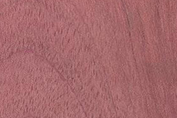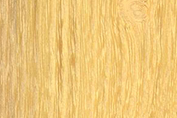2024 Copyright – KOCH GmbH | Graphics & conception with ❤ from the Lower Rhine – EHRENPLATZ
Wood and veneers in yacht building/yachts
Interesting facts about wood and veneers
Wood and veneers in yacht building: a combination of tradition and innovation
Wood has been at the heart of boat and yacht building for centuries. Despite the advent of modern materials such as fiberglass and aluminum, wood remains a popular choice for yacht builders and owners because of its natural beauty, sustainability and exceptional mechanical properties. In this article we explore the role of wood and veneers in contemporary yacht building and how these traditional materials blend with modern technology to create stunning and high performance yachts.
Types of wood in yacht construction: a variety of options
Fine veneers and woods in yacht building
Traditionally, fine veneers and woods have always been used in yacht building. Straight woods such as
teak
, mahogany, oak and cedar are known for their resistance to moisture and their durability. They are ideal for decks, superstructures and interior fittings. Soft woods such as cedar and pine are lighter and are often used in hull construction to reduce the overall weight of the yacht.
Exotic woods and their applications
Exotic types of wood bring a unique aesthetic to yacht building. Wood species such as wenge, zebrano and iroko not only offer a stunning appearance, but also specific properties that make them ideal for certain applications within a yacht. The choice of wood depends on its durability, weight and the desired look.
Veneers in yacht building: art and technology
What are veneers?
Veneers are thin sheets of wood that are cut from a solid block of wood. They offer a way to make sustainable use of the beauty of rare and exotic woods by using less material. Veneers enable consistent aesthetics over large areas and are crucial for the design of luxurious interiors in yachts.
Applications and advantages
Veneers are used in various areas of yacht building, from the interior to the exterior decks. They allow designers to experiment with different wood patterns and colors to create unique and appealing spaces. The flexibility of veneers also makes it possible to produce complex shapes and curves that would be more difficult to achieve with solid wood.
Interesting facts about wood and veneers
Sustainability in yacht building: responsible use of resources
Sustainability is an increasingly important aspect of yacht building. The use of certified wood from sustainable forestry and the sparing use of veneers are steps towards more environmentally friendly yachts. Yacht builders and owners recognize the importance of conserving natural resources and choose materials that are both ecologically responsible and durable.
Innovations and technologies
Modern technologies in yacht building include innovative treatments and processing methods that increase the durability and resistance of wood. From high-pressure impregnation to advanced varnishing processes, these techniques help ensure that wood and veneers can withstand the challenging conditions at sea.
Wood and veneers play a central role in yacht building by combining tradition with modern technology. Choosing the right wood and using veneers makes it possible to create yachts that are not only aesthetically pleasing, but also high-performance and sustainable. The responsible use of these natural resources ensures that the art of yacht building is preserved for future generations.
























